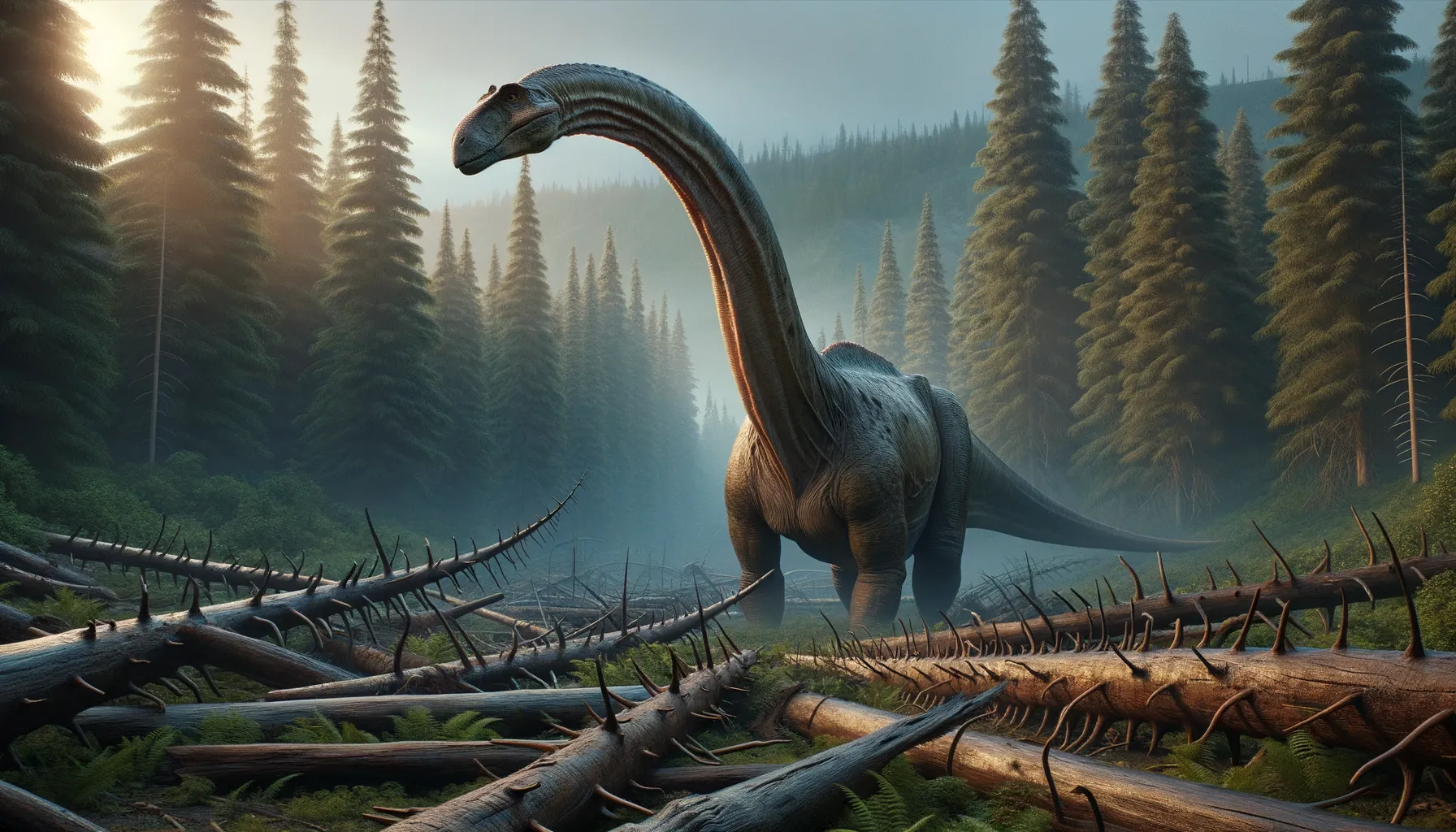
Zigongosaurus
Roaming giant of the Jurassic forests.
Period
triassic
Length
Reached lengths of up to 20 meters.
Height
Stood about 10 meters tall.
Weight
Weighed up to 22 tons.
Zigongosaurus was a massive, long-necked dinosaur that roamed the Earth during the Jurassic period. Known for its impressive size and distinctive physical features, it primarily inhabited forested regions. Its fossil remains were first discovered in Zigong, China, offering valuable insights into the past ecosystems and signaling an important part of the rich dinosaur history in Asia.
Diet
Zigongosaurus was an herbivore, feeding primarily on the lush plant life available during the Jurassic period. Its long neck allowed it to reach high into trees to consume leaves and other vegetation.
Hunting
As a herbivore, Zigongosaurus did not hunt prey. Instead, it spent much of its time foraging for plants. Its size likely deterred many predators from attempting an attack.
Environmental challenges
Zigongosaurus faced various environmental challenges, including changes in climate and vegetation which could affect food availability. The Jurassic period's shifting landscapes meant these dinosaurs had to adapt to different terrains. Additionally, they needed to be mindful of large predators that roamed the same areas, posing threats despite their size.
Speed
Slow-moving due to its large size.
Lifespan
Lived for several decades.
First discovery
First discovered in Zigong, China.
Fun Facts
- Zigongosaurus was a sauropod dinosaur that lived during the Middle Jurassic period, around 160 million years ago.
- The name 'Zigongosaurus' means 'Zigong lizard,' named after the Zigong region in China where its fossils were discovered.
- Zigongosaurus was a herbivore, which means it primarily fed on plants.
- Fossils of Zigongosaurus were first discovered in the Sichuan Province of China, which is famous for yielding numerous dinosaur fossils.
- Like other sauropods, Zigongosaurus had a long neck and tail, and it likely used its neck to reach high vegetation.
- The exact size of Zigongosaurus is still debated, but it is believed to have been a large dinosaur, possibly over 15 meters long.
- Zigongosaurus is part of the cetiosaurid family, an early group of sauropods that provide insight into the evolution of these giant dinosaurs.
Growth and Development
Zigongosaurus grew rapidly during its juvenile stages, eventually reaching massive sizes that helped protect it from predators. Like many large dinosaurs, it likely hatched from eggs and experienced a lengthy lifespan. Its ability to continue growing throughout its life was essential for survival in the diverse ecosystems.
Habitat
Zigongosaurus predominantly lived in forested areas that provided abundant food sources. These habitats were rich in cycads, conifers, and ferns, which made up its diet. The surroundings offered both nourishment and shelter from harsh environmental elements, allowing these creatures to thrive.
Interaction with other species
Zigongosaurus likely shared its environment with various dinosaur species, ranging from smaller herbivores to large carnivores. Its primary interactions were non-predatory, as it coexisted with other herbivores in search of food. Despite its peaceful nature, it had to be on alert for predators like theropods.
Natural lifespan
Zigongosaurus had a natural lifespan that spanned several decades.
Reproduction
Zigongosaurus reproduced by laying eggs, like many other dinosaurs of its time. Nesting likely occurred in defensible locations to protect the eggs from predators. Once hatched, young Zigongosaurus would rely on their large herds for safety and learn foraging behaviors for survival.
Social behaviour
Zigongosaurus might have lived in herds, making it easier to find food and providing collective protection against predators. Social structures within herds could have varied, with adults leading and protecting the younger members. Such group dynamics were vital for raising offspring and ensuring the survival of the species.
Fossil locations
Fossils of Zigongosaurus have been primarily found in the Zigong Basin of Sichuan Province in China. These discoveries have provided deep insights into the Jurassic period's ecosystems in this region. The area has become an important site for paleontologists studying Asian dinosaurs.
